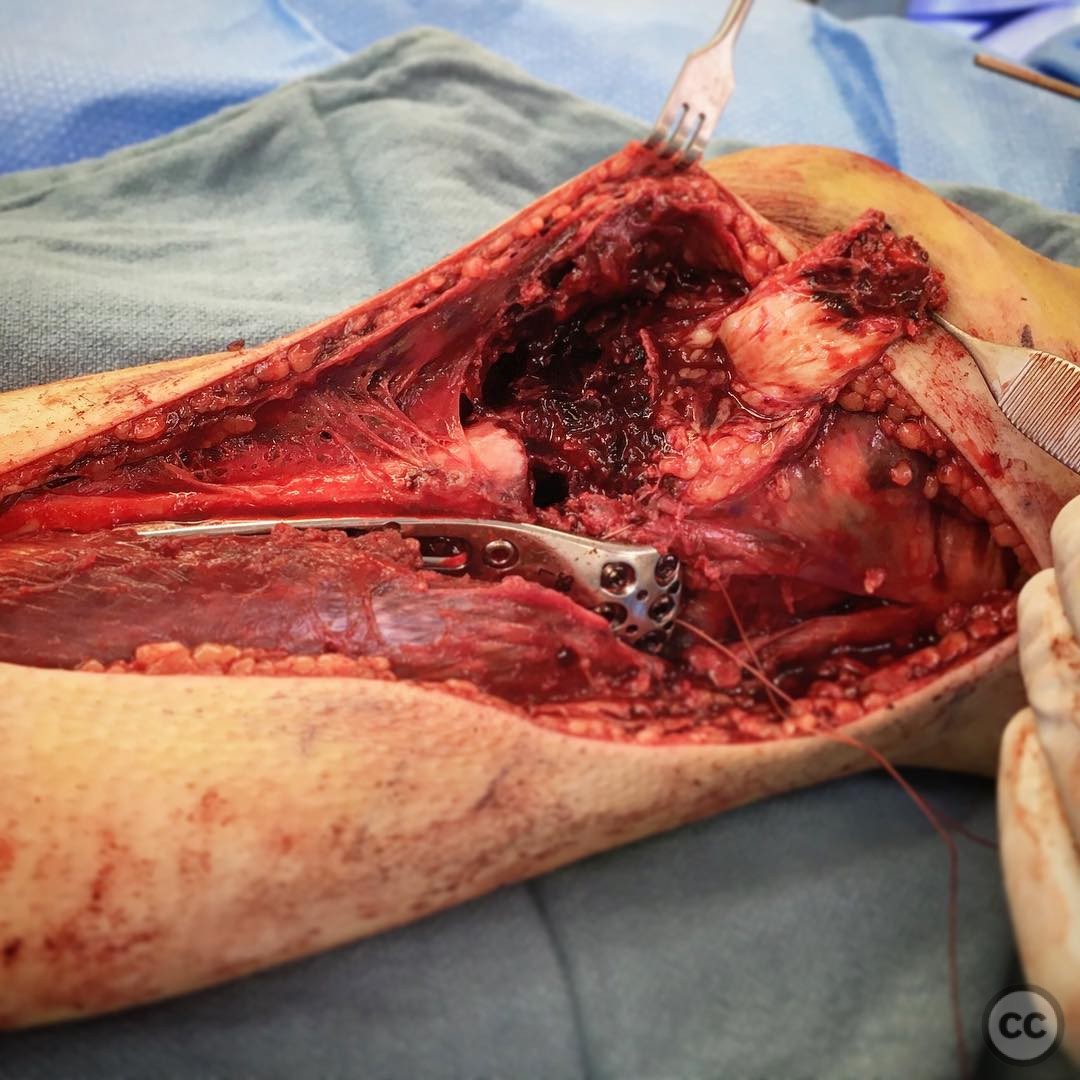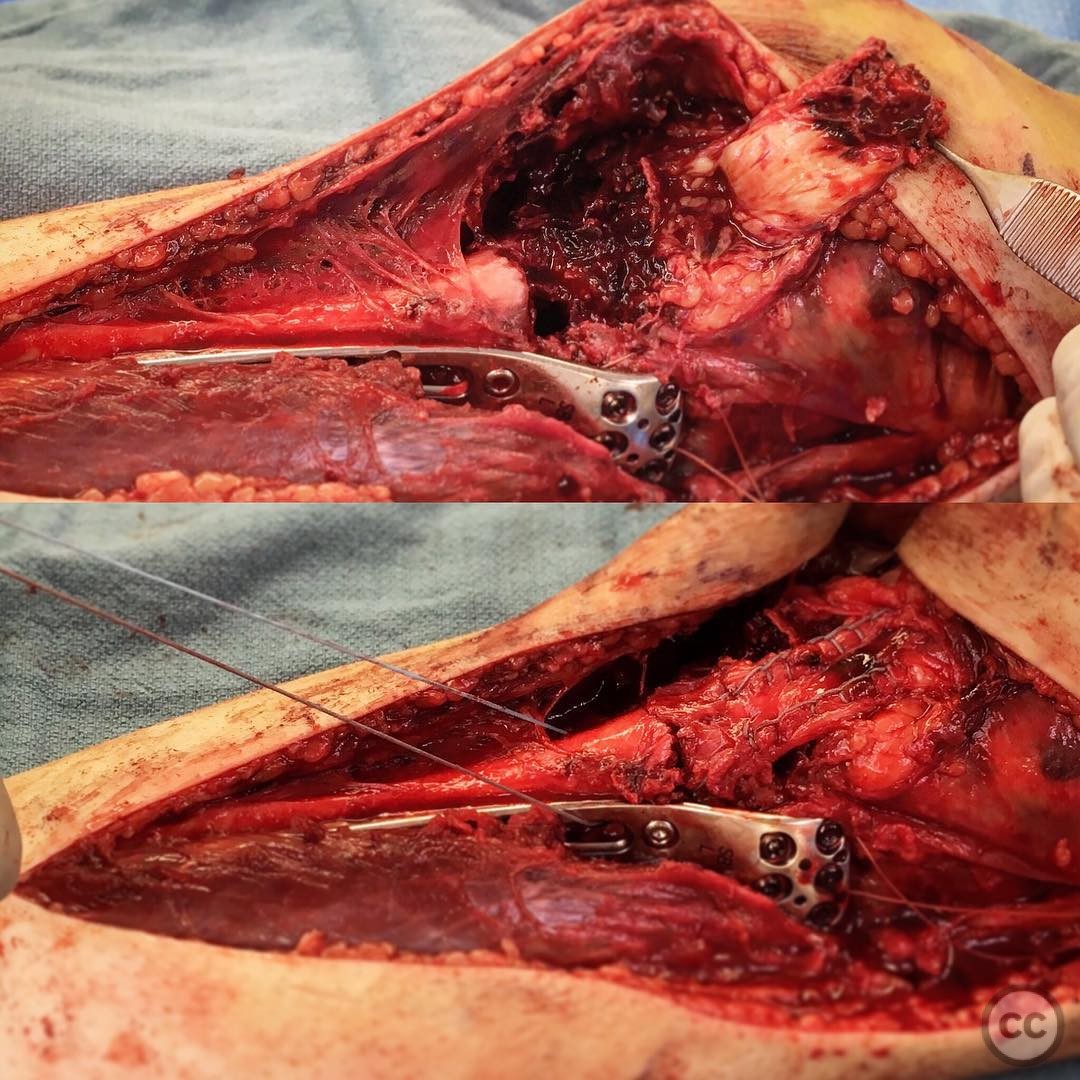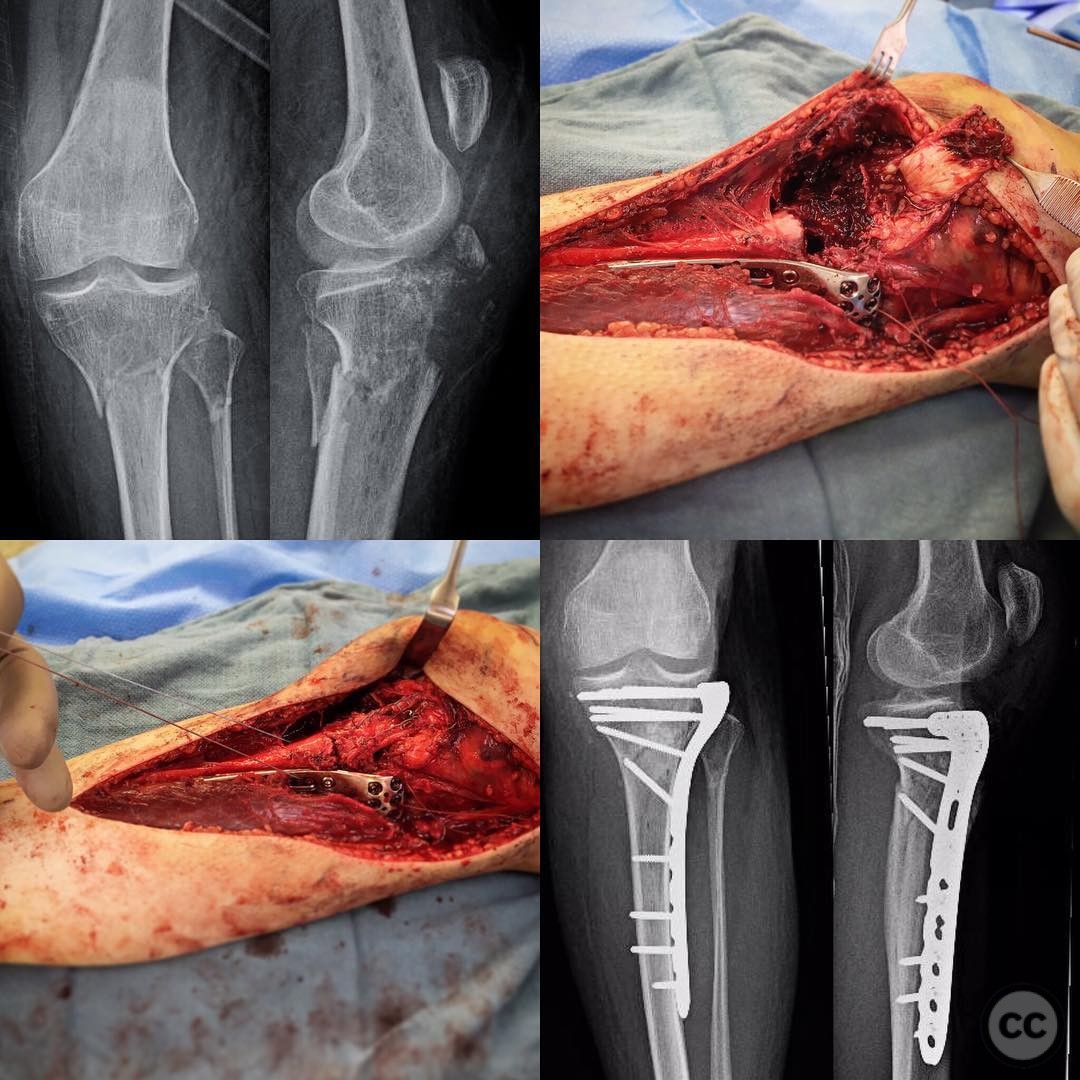Proximal Tibial Metaphyseal Fracture with Tibial Tubercle Avulsion in Post-Polio Syndrome
Score and Comment on this Case
Clinical Details
Clinical and radiological findings: A 61-year-old female with a history of post-polio syndrome was involved in a pedestrian versus car accident. Radiographs revealed a proximal metaphyseal tibial fracture, classified as AO/OTA 41-A2, with an associated avulsion of the tibial tubercle. The extensor mechanism was disrupted, posing a significant challenge due to the minimal bone stock available for repair. The patient's bone quality was compromised secondary to post-polio syndrome.
Preoperative Plan
Planning remarks: The preoperative plan involved addressing the proximal metaphyseal tibial fracture through a direct anterior approach. Given the poor bone quality and minimal bone stock at the tibial tubercle, the focus was on achieving stable fixation of the extensor mechanism using suture techniques rather than traditional plating.
Surgical Discussion
Patient positioning: The patient was positioned supine on the operating table, with a tourniquet applied to the proximal thigh to maintain a bloodless field during the procedure.
Anatomical surgical approach: A longitudinal anterior incision was made over the proximal tibia. The patellar tendon was exposed, and a Krackow suture technique was employed using #5 Fiberwire along the full length of the tendon. The suture was then passed through a diaphyseal bone tunnel and secured to the plate to stabilize the tibial tubercle avulsion.
Operative remarks:The surgeon noted the critical importance of achieving a stable repair of the extensor mechanism due to the minimal bone stock available at the tibial tubercle. Traditional plating was not feasible; thus, Fiberwire was utilized exclusively for fixation. The extra-articular nature of the tibial fracture obviated the need for a submeniscal arthrotomy. Despite initial concerns regarding potential failure of the extensor mechanism repair, the patient demonstrated successful healing without extensor lag at six months postoperatively.
Postoperative protocol: Postoperative rehabilitation included immobilization in extension for initial healing, followed by gradual range of motion exercises. Weight-bearing was restricted initially, with progression based on clinical and radiographic evidence of healing.
Follow up: Not specified
Orthopaedic implants used: #5 Fiberwire
Search for Related Literature

orthopaedic_trauma
- United States , Seattle
- Area of Specialty - General Trauma
- Position - Specialist Consultant

Industry Sponsership
contact us for advertising opportunities




Article viewed 105 times
05 Aug 2025
Add to Bookmarks
Full Citation
Cite this article:
Surname, Initial. (2025). Proximal Tibial Metaphyseal Fracture with Tibial Tubercle Avulsion in Post-Polio Syndrome. Journal of Orthopaedic Surgery and Traumatology. Case Report 31118572 Published Online Aug 05 2025.